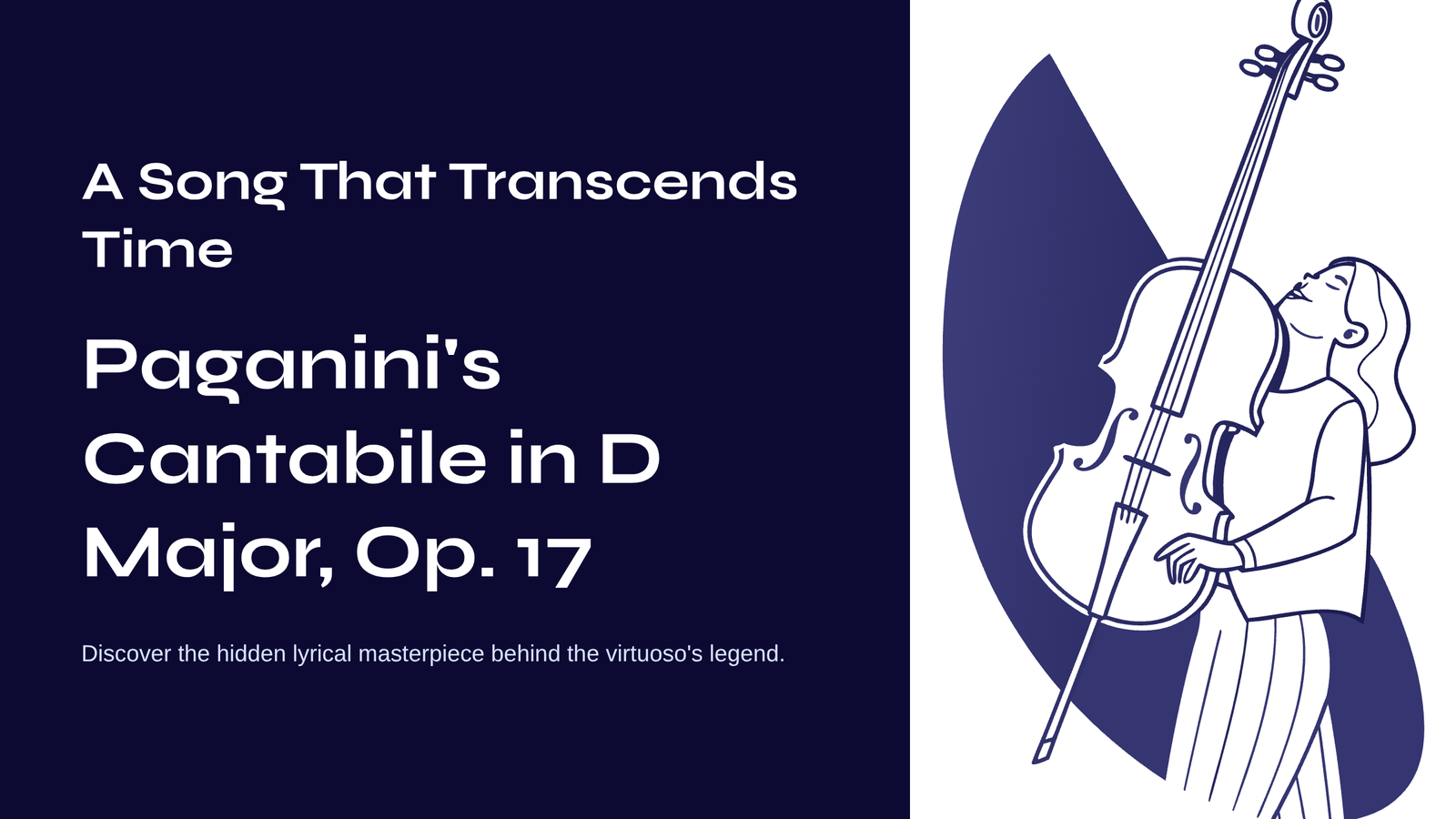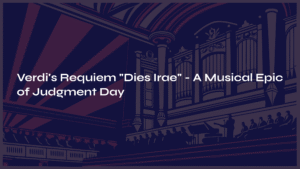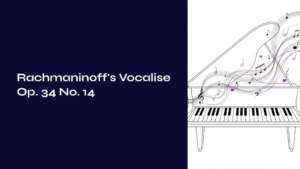Table of Contents
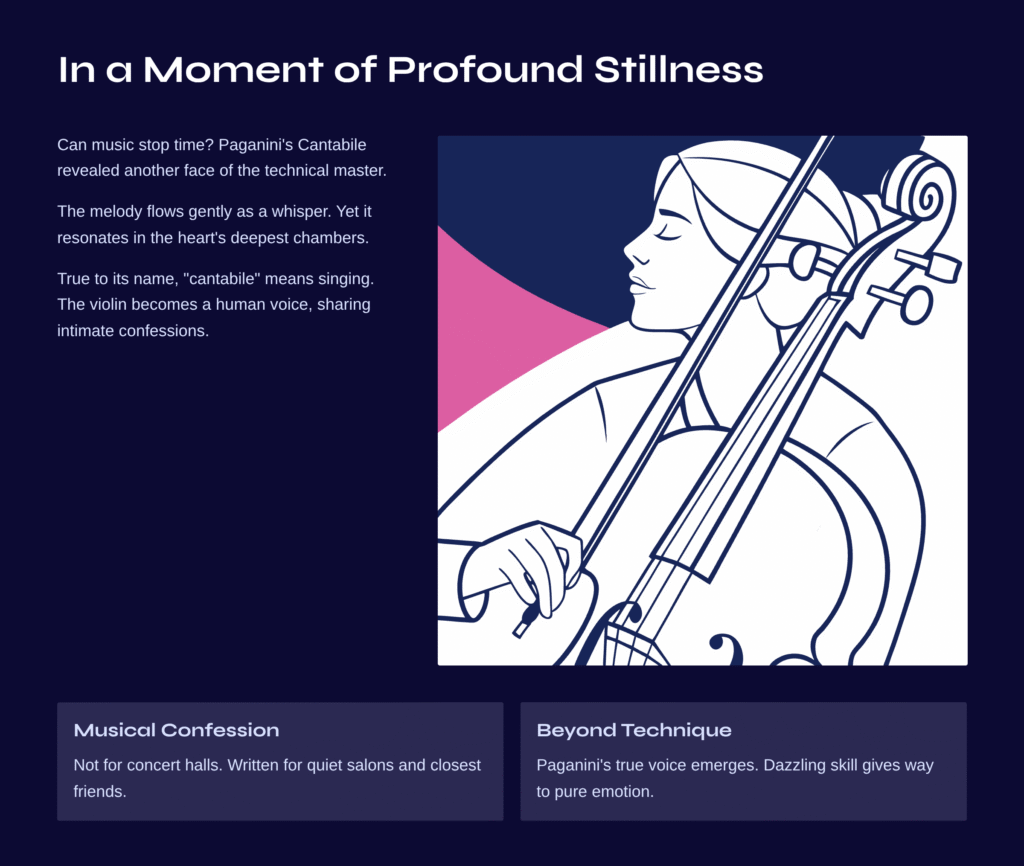
In a Moment of Profound Stillness
Do you believe that music can stop time? I found my answer when I first heard Paganini’s Cantabile in D Major. It revealed another face of the man known only as a master of technical wizardry. The melody flowing over the violin strings was as gentle as someone’s whisper, yet it carried a resonance that touched the deepest chambers of the heart.
True to its name, “cantabile” – meaning “in a singing manner” – this piece truly sings. The story told by the violin, transformed into a human voice, might be Paganini’s true confession, hidden behind all that dazzling technique. This was music meant not for concert hall applause, but for intimate sharing in quiet salons with those closest to him – a musical confession of the soul.
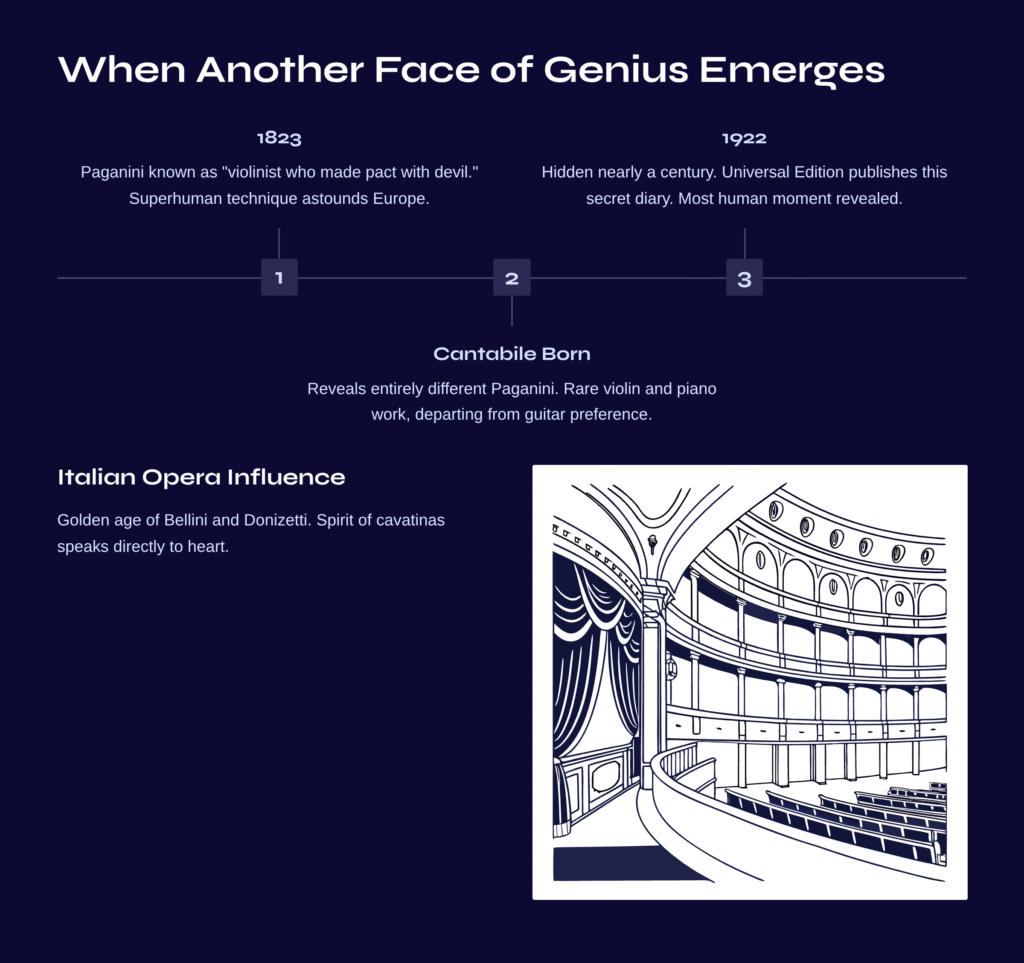
When Another Face of Genius Emerges
By 1823, Niccolò Paganini was already known throughout Europe as “the violinist who made a pact with the devil.” The superhuman technique flowing from his fingertips seemed beyond mortal capability to his contemporaries. Yet it was precisely during this period that Cantabile in D Major, Op. 17 was born – a work that reveals an entirely different Paganini.
This composition stands apart as one of the rare pieces Paganini wrote for violin and piano, departing from his preferred violin and guitar combination. Hidden for nearly a century until its publication by Universal Edition in 1922, this piece feels like a secret diary the composer intentionally kept private.
Italy at the time was witnessing the golden age of Bellini and Donizetti’s operas. Within Paganini’s Cantabile, we can clearly sense the spirit of Italian opera’s cavatinas – those lyrical arias that spoke directly to the heart. Here lies the most human moment revealed by the master of technical sorcery.
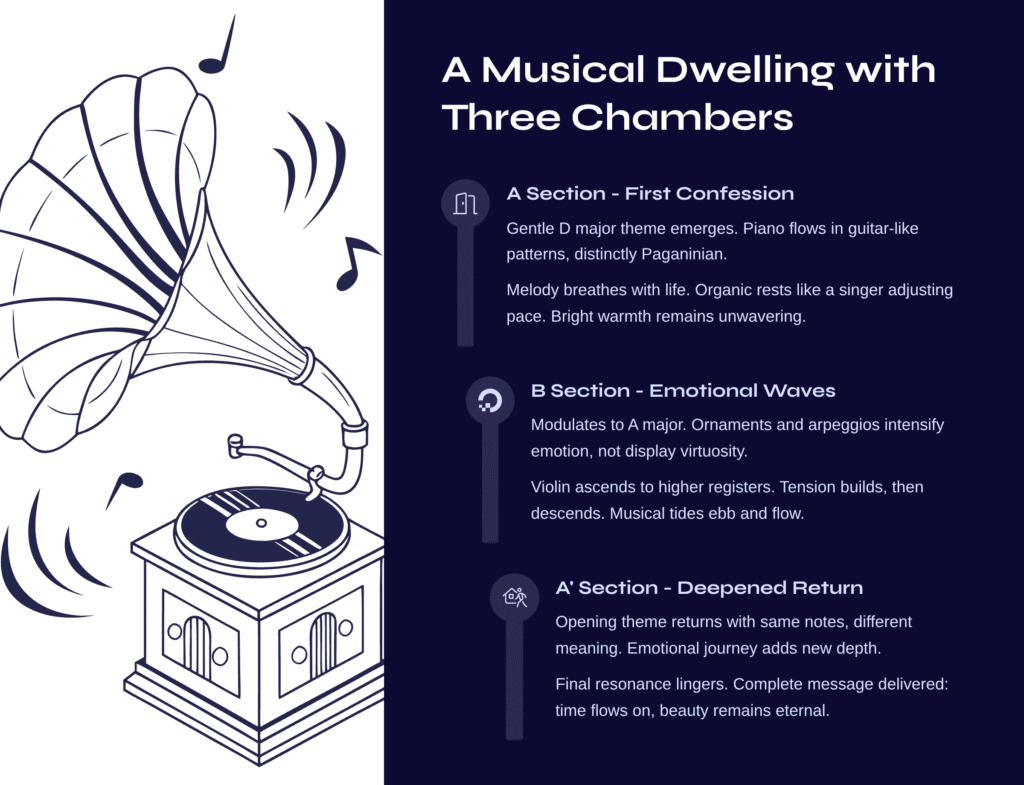
A Musical Dwelling with Three Chambers
A Section – The First Moment of Confession
When the gentle D major theme emerges through the violin, it feels as if someone is carefully opening a door and stepping inside. The piano accompaniment flows in gentle harmonic patterns reminiscent of guitar textures – a distinctly Paganinian touch.
The main melody breathes with life and natural phrasing. Each phrase contains organic rests, like a singer adjusting the pace of words according to emotion, with tempo subtly shifting throughout. Even within this freedom, the bright, warm fundamental color of D major remains unwavering.
B Section – When Emotional Waves Begin to Ripple
In the middle section, as the A section melody modulates to A major, the music moves into an entirely different dimension. Here, Paganini reveals hints of his true nature. Ornaments and arpeggios appear, but they serve not as displays of virtuosity but as vehicles for emotional intensification.
The contrast is remarkable – the tension created as the violin melody ascends to higher registers, followed by the stability as it descends back to lower ranges. Like waves hitting the shore and receding, musical tides ebb and flow throughout. The piano accompaniment transcends mere support, becoming a conversational partner with the violin.
A’ Section – The Song Returns, Deepened in Resonance
When the opening theme returns in the recapitulation, it carries the same notes but entirely different meaning. The emotional journey experienced through the B section adds new depth to this familiar melody. Crescendos and diminuendos, subtle dynamic changes feel like hearing the same story retold with different inflections.
As the final resonance spreads and lingers, we finally receive the complete message this piece sought to convey. Perhaps it’s Paganini’s quiet confession: “Time flows on, but beauty remains eternal.”
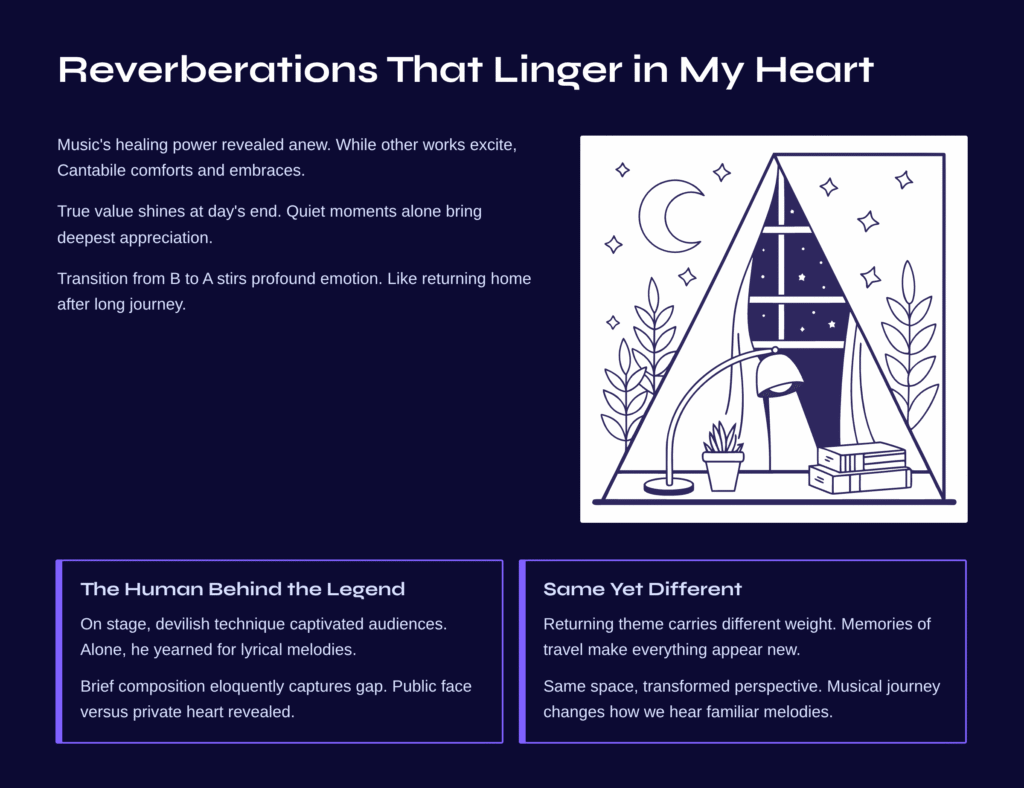
Reverberations That Linger in My Heart
Each time I listen to this piece, I’m reminded anew of music’s healing power. While Paganini’s other works excite and astonish us, Cantabile comforts and embraces. Its true value shines especially at day’s end, when all tasks are complete and we sit quietly alone.
The transition from B section back to A section always stirs something profound within me. It’s like returning home after a long journey – the same space, yet memories of travel make everything appear new. Similarly, the returning theme melody carries a weight different from its initial presentation.
Sometimes, listening to this piece, I imagine Paganini the human being. On stage, he captivated audiences with devilish technique, but alone, perhaps he yearned for such lyrical melodies. I never expected this brief composition to so eloquently capture the gap between an artist’s public face and private heart.
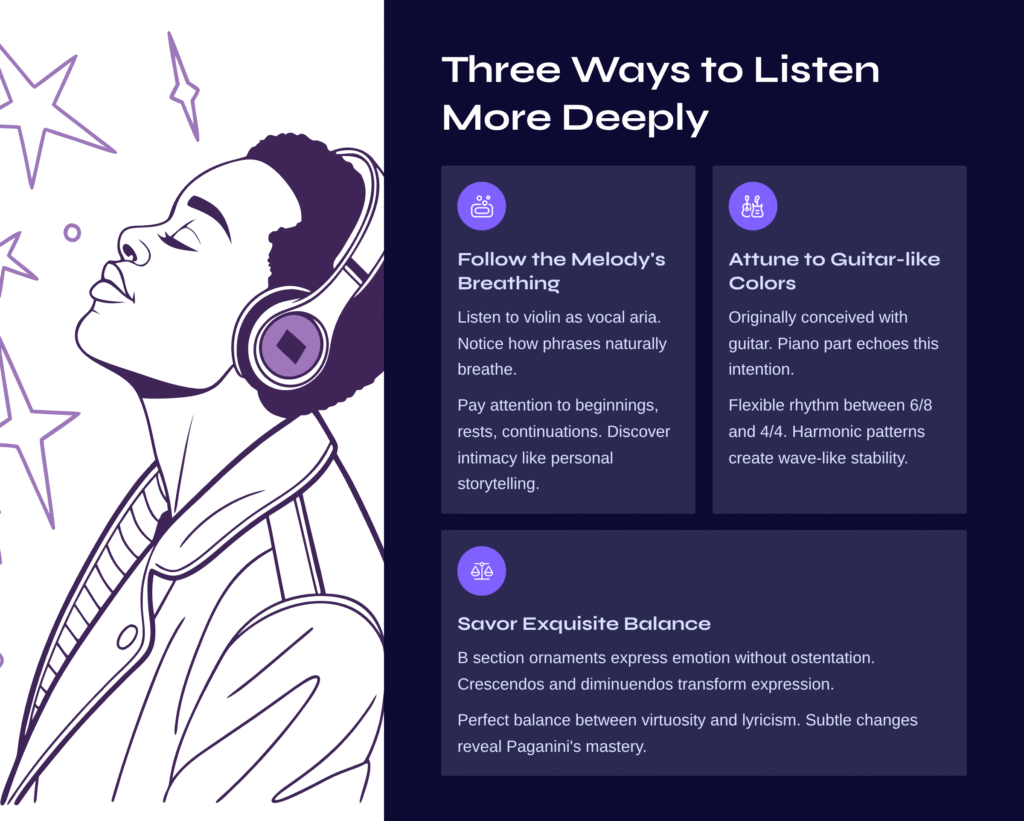
Three Ways to Listen More Deeply
First – Follow the Melody’s Breathing
To properly appreciate Paganini’s Cantabile, listen to the violin melody as if it were a vocal aria. Notice how each phrase naturally breathes at its beginning and end. Especially when the theme is first presented in the A section, pay careful attention to how the melody begins, where it briefly rests, and how it continues. You’ll discover an intimacy that feels like someone telling you a personal story.
Second – Attune Your Ear to the Guitar-like Colors of Piano Accompaniment
Remember that Paganini originally conceived this with guitar accompaniment, and listen to the piano part with this in mind. The flexible rhythmic feel moving between 6/8 and 4/4 time, and the harmonic patterns reminiscent of guitar arpeggios, create a wave-like sense of stability. Recognizing these accompaniment characteristics will help you feel more deeply the Italian sensibility and chamber music intimacy of the entire piece.
Third – Savor the Exquisite Balance of Ornamentation and Dynamics
The ornaments and arpeggios appearing in the B section effectively express emotional heightening without being ostentatious. Additionally, the crescendos and diminuendos in the A’ section give the same melody an entirely different expression. Following these subtle changes, you’ll discover the perfect balance point Paganini found between virtuosity and lyricism.
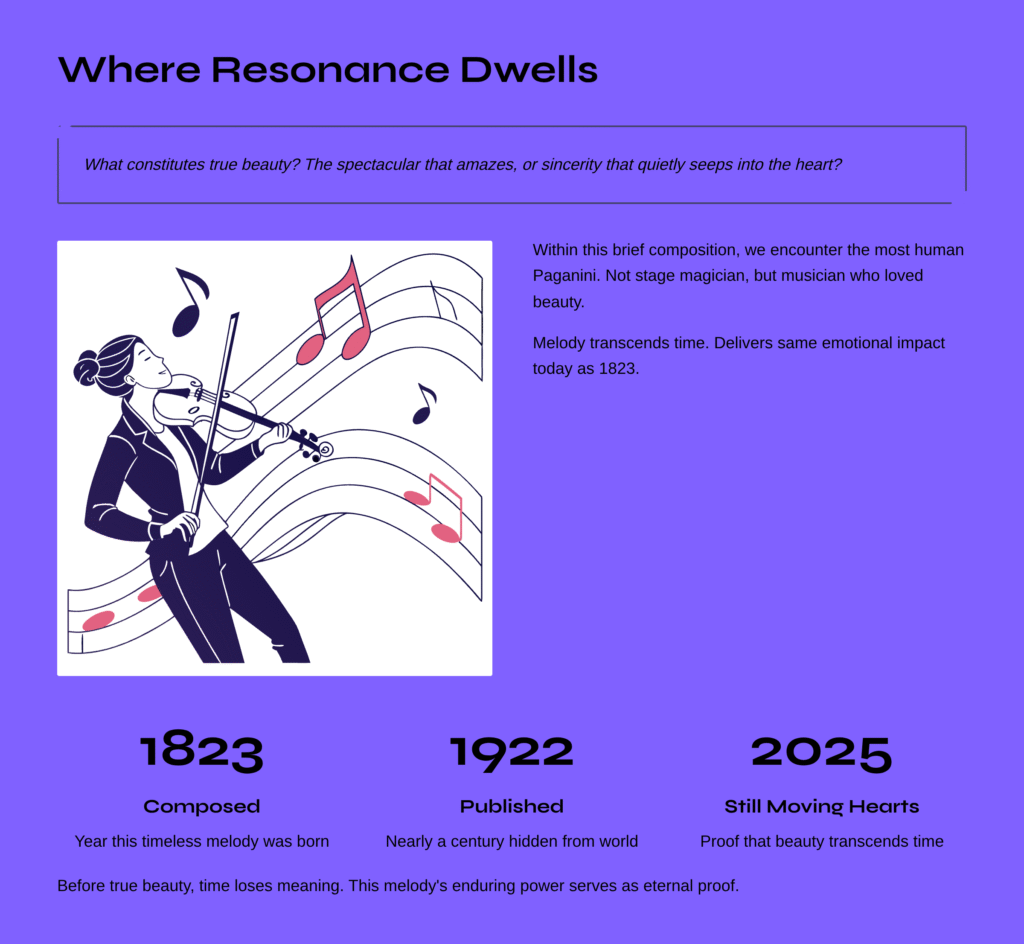
Where Resonance Dwells
Paganini’s Cantabile in D Major, Op. 17 poses a question: What constitutes true beauty? Is it the spectacular that amazes everyone, or the sincerity that quietly seeps into the heart’s depths?
Within this brief composition, we encounter the most human aspect of Paganini the artist – not the stage magician, but a musician who loved beautiful melodies. The melody his violin sings transcends time, delivering the same emotional impact to us today.
Returning to my opening question about music’s ability to stop time, listening to Paganini’s Cantabile has convinced me: before true beauty, time loses meaning. The fact that this melody, composed in 1823, still moves our hearts in 2025 serves as proof of this truth.
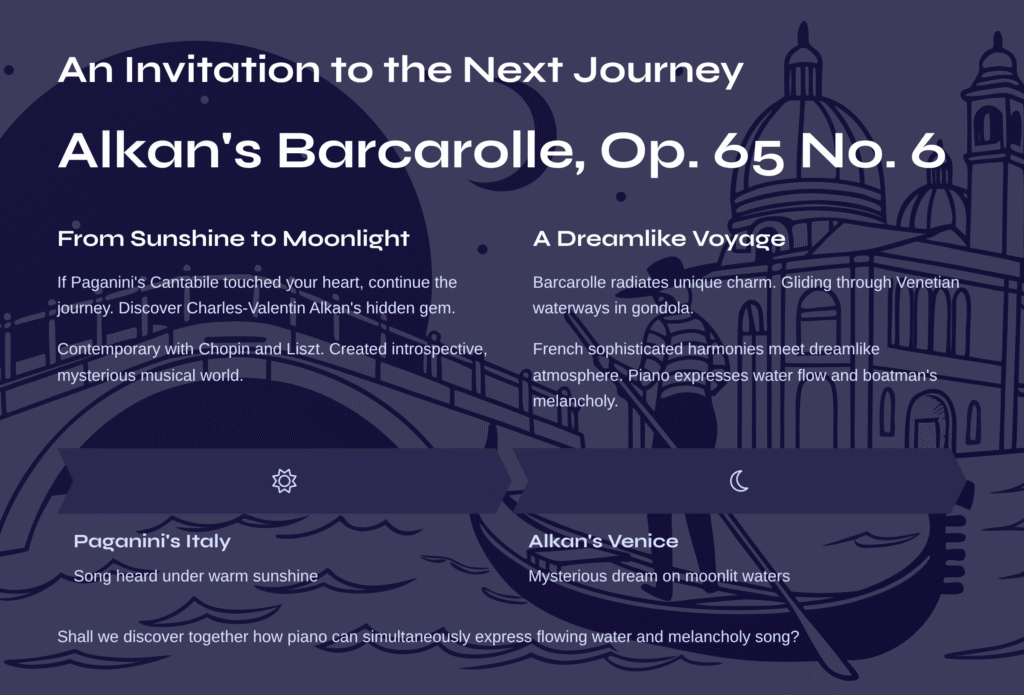
An Invitation to the Next Journey – Alkan’s Barcarolle, Op. 65 No. 6
If Paganini’s lyrical song has left its mark on your heart, shall we embark on another temporal journey? Our next exploration will be Charles-Valentin Alkan’s Barcarolle, Op. 65 No. 6.
Alkan was a hidden gem among 19th-century French composers, contemporary with Chopin and Liszt but creating a far more introspective and mysterious musical world. His Barcarolle radiates unique charm through the meeting of dreamlike atmosphere – like gliding through Venetian waterways in a gondola – with France’s characteristic sophisticated harmonies.
If Paganini’s Cantabile was a song heard under Italy’s warm sunshine, Alkan’s Barcarolle would be like a mysterious dream floating on moonlit waters. Shall we discover together how the piano can simultaneously express the flow of water and the melancholy of a boatman’s song?
